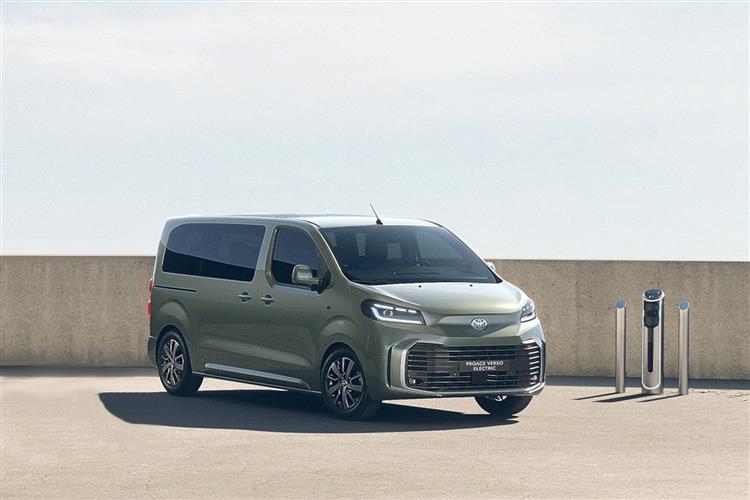VERSOTILE SPACE (some text hidden) --NONE--
By Jonathan Crouch
Toyota enters the super-large MPV EV segment for the first time with this Proace Verso EV model. Jonathan Crouch takes a look.
Ten Second Reviewword count: 39
Toyota has used its LCV partnership with Stellantis to bring us this model, the Proace Verso EV. A full-electric, it's a really sensible family or business choice if you need an MPV with room for up to nine people.
Backgroundword count: 144
If you're in search of a really big full-electric MPV these days, you'll need a big cheque book. Think over £60,000 for a Ford E-Tourneo Custom. And nearly £90,000 for a Mercedes EQV. Toyota though, wants to suggest a more sensible option. For well under £50,000, the company's Proace Verso EV looks much more accessible. The Proace Verso, based on the brand's Proace mid-size van, has been around since 2016, when its arrival marked Toyota's return to the large MPV segment, a market sector it'd been absent from since the demise of the Previa back in 2007. But to date we've only had this vehicle in diesel form. That black pump-fuelled model's now been replaced by this full-EV variant. As before, it's Toyota's version of the Stellantis Group design also sold as the Peugeot E-Traveller, the Citroen e-SpaceTourer and the Vauxhall Vivaro Life Electric.
Engines and Tech Specword count: 242
Toyota is offering the 75kWh battery pack that you can also get with the same basic design badged as the Vauxhall Vivaro Life Electric, the Citroen e-SpaceTourer or the Peugeot E-Traveller. Which means you get much the same sort of range as is quoted with those models - here rated at 214 miles. Not massive, but if you're planning to use this Proace Verso for merely suburban duties, that might not matter. As with its Stellantis Group cousins, the powertrain is based around comprises a 134bhp electric motor and its associated lithium-ion battery is located beneath the vehicle floor, thus avoiding loss of cabin space. The driver can select Eco, Normal or Power driving mode using a centre console-mounted switch. In Power mode, maximum output delivers peak torque of 260Nm from start-up. Top speed is electronically limited to 84mph and 0-62mph acceleration can be accomplished in 12.1 seconds. In Eco mode output is reduced to 81bhp with 190Nm of torque, while in Normal mode the electric system produces 107bhp with 210Nm. Through the corners, as you would expect, there's plenty of body roll if, rather unwisely, you start throwing the thing about. If you can ignore both that and the slightly vague steering and find yourself absolutely having to push on, you'll find that there's reasonable grip and traction. The turning circle is pretty tight too - at just 11.3 metres - making this a surprisingly manoeuvrable vehicle for use around town.
To see the full road test text contact us on 0330 0020 227
Pictures (high res disabled)

.jpg)
|
Statistics (subset of data only)
Min |
Max |
|
Price: |
£45,769.00 (At 7 Aug 2024, L1 Icon) |
£55,866.00 (At 7 Aug 2024, L2 Excel) |
Max Speed (mph): |
84 |
|
0-62 mph (s): |
13.5 |
|
Electric WLTP-Rated Driving Range (miles): |
214 |
|
Length (mm): |
4950 |
|
Width (mm): |
1986 |
|
Height (mm): |
1925 |
|
Boot Capacity (l): |
603 |
798 |
Power (ps): |
134 |
|



